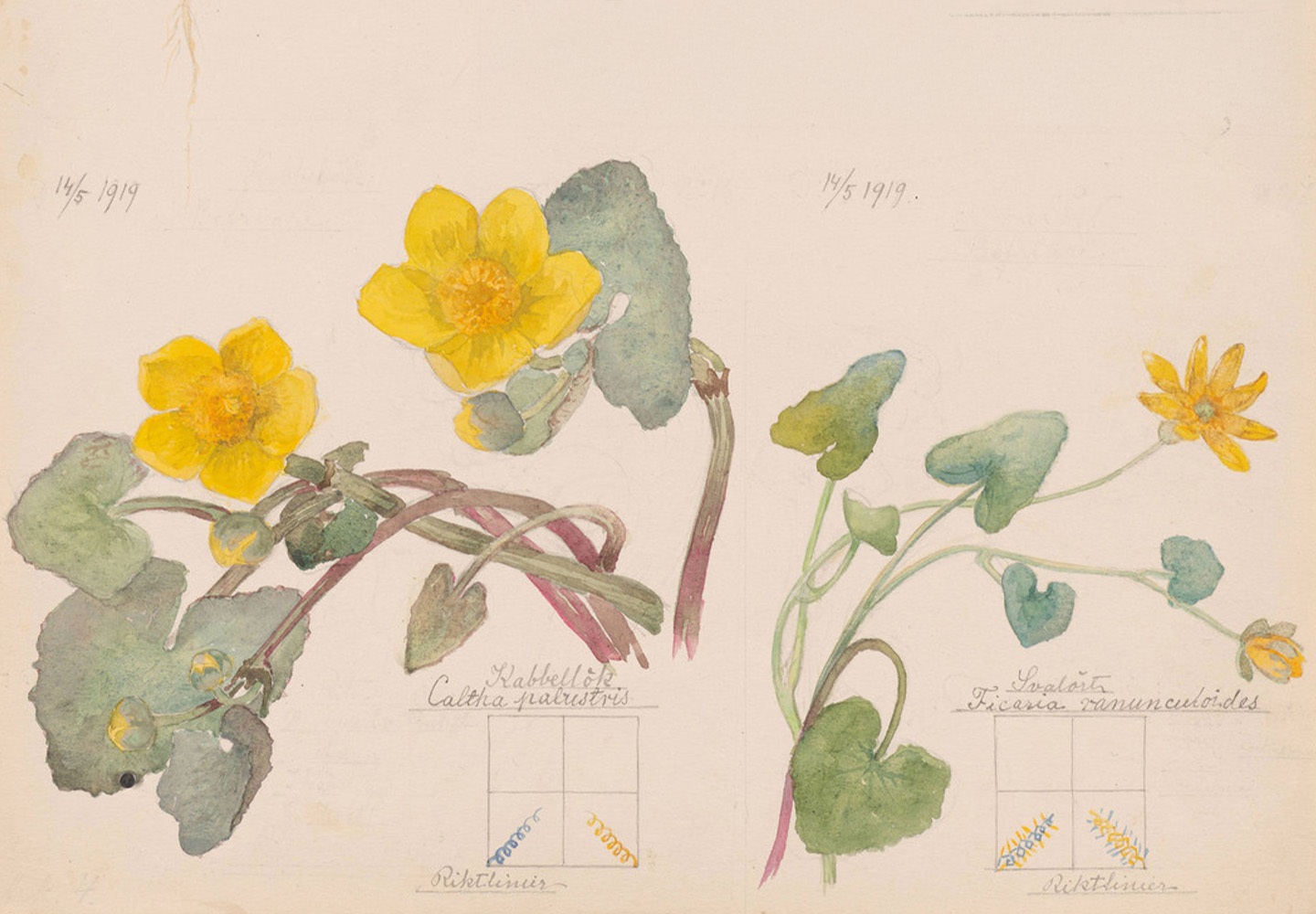Exhibition Details
In the spring and summer of 1919 and 1920, during a period of intense engagement with nature, artist Hilma af Klint drew flowers almost every day. “I will try,” she wrote, “to grasp the flowers of the earth.”
Breaking with traditional botanical art, af Klint juxtaposed her exquisitely rendered blossoms with precisely drawn diagrams: a blooming sunflower is echoed by nested circles; a marsh marigold is accompanied by mirrored spirals; a cluster of budding branches is set against checkerboards of dots and strokes. With this profusion of forms—an expansion of the abstract language for which she is best known—af Klint visualizes “what stands behind the flowers,” demonstrating her belief that careful observation of her surroundings reveals ineffable aspects of the human condition.
Breaking with traditional botanical art, af Klint juxtaposed her exquisitely rendered blossoms with precisely drawn diagrams: a blooming sunflower is echoed by nested circles; a marsh marigold is accompanied by mirrored spirals; a cluster of budding branches is set against checkerboards of dots and strokes. With this profusion of forms—an expansion of the abstract language for which she is best known—af Klint visualizes “what stands behind the flowers,” demonstrating her belief that careful observation of her surroundings reveals ineffable aspects of the human condition.
Additional Details
Af Klint imagined her portfolio as an atlas—or in botanical terms a flora—that details the plants of Sweden, where she lived and worked. Hers, however, is a flora of the spirit, a mapping of the natural world in spiritual terms that would stand alongside any scientific resource.
Putting representation and abstraction, close looking and envisioning, art and botany into dialogue, af Klint’s drawings recognize the interconnectedness of all living things. “I have shown,” she wrote, “that there is a connection between the plant world and the world of the soul.”
Putting representation and abstraction, close looking and envisioning, art and botany into dialogue, af Klint’s drawings recognize the interconnectedness of all living things. “I have shown,” she wrote, “that there is a connection between the plant world and the world of the soul.”
Location
MoMA
11 West 53 Street, Manhattan
New York, NY 10019
Image: Courtesy of The Museum of Modern Art, New York


